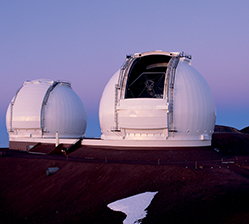19.3 Optical Instruments
Reading Focus
Key Concepts
 What are the two main types of telescopes?
What are the two main types of telescopes? How does a camera form an image on film?
How does a camera form an image on film? What type of lenses does a compound microscope use to form an image?
What type of lenses does a compound microscope use to form an image?
Vocabulary
telescope
reflecting telescope
refracting telescope
camera
microscope
Reading Strategy
Using Prior Knowledge Copy the diagram below and add to it the names and descriptions of other optical instruments you know. Revise the diagram after reading the section.

Your view of the world is not shaped solely by what you can see with the unaided eye. From the most distant star in the galaxy to the tiniest cell of your skin, optical instruments improve your ability to see objects. With telescopes, you can see images of astronomical, far-away objects—some of which may no longer exist. With microscopes, you can see detailed images of objects too tiny to otherwise be seen. With cameras, you can fill your photo album with images of your family and friends, or places you have visited.
Telescopes, microscopes, and cameras are all examples of optical instruments that enhance your ability to see. All of these optical instruments have something in common—they all use lenses or mirrors, or a combination of the two, to reflect and refract light.
Telescopes
Figure 12 Shown below is one of the two Keck telescopes located on the summit of Hawaii's dormant Mauna Kea volcano. The telescopes, one optical and one infrared, are the largest in the United States. Inferring What might be a reason for the telescopes being located on a mountain top?

The universe is so vast that the light coming from the farthest stars has traveled billions of years before it reaches Earth. Some of the light takes so long to reach Earth that by the time it gets here, the source of the light—the star—has long since burned out. With a telescope you can see images of the star even though it no longer exists. A telescope is an instrument that uses lenses or mirrors to collect and focus light from distant objects. In Greek, the word teleskopos means “seeing from a distance.”




